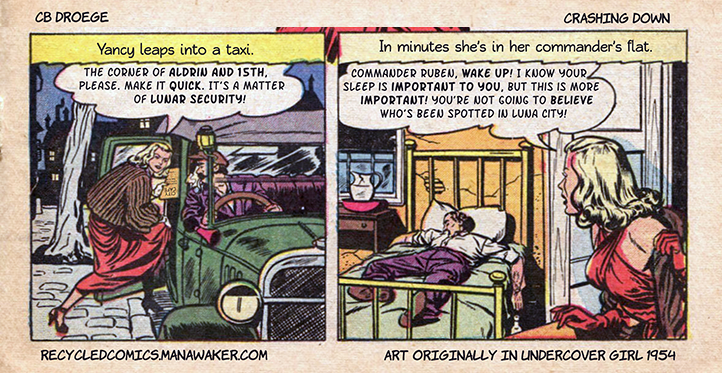Crashing Down 5
Modern artists have a tendency to depict Luna City in this era as either a new and shiny place, homogeneously reflecting the relatively fresh escape from Earth, and the grand new things that people there were building, or as a run-down and decrepit place, reflecting the way we see Luna City today, as one of the oldest cities of humanity, a place where any building or statue might be hundreds of years old. In the art here, created only a few decades after the events depicted, we see a more accurate depiction, somewhere in between those two extremes, Luna City was just a city. It had been in settled a little over a hundred years ago at this point, and it had some old, run down sections, like the old-town quarter that Commander Ruben’s flat was in (Aldrin Avenue was the main central road in the city, and some of the oldest buildings on Luna lined it), but mostly the cityscape just looked like any human city tends to look after a few generations have passed: patched-up, non-homogeneous, filled with competing colors and styles as each builder and planner makes their own choices. Some harkening back to Earth architecture, and some pushing the boundaries of what Luna Concrete can do.



Discussion ¬